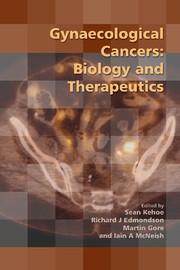
- Publisher:
- Cambridge University Press
- Online publication date:
- February 2014
- Print publication year:
- 2011
- Online ISBN:
- 9781107784772

Gynaecological cancers are categorised as 'rare' diseases, although collectively they affect over 16,000 women each year in the UK alone. There is a lack of real understanding of these conditions compared with other malignancies, possibly owing to their relative rarity when viewed as individual diseases. The 60th RCOG Study Group brought together a range of experts to examine as many biological aspects of gynaecological cancers as possible, including both surgical and non-surgical therapies. This book presents the findings of the Study Group, with contents including:current understanding of the biology of gynaecological cancerstranslation of biology to the clinicstate of the art in imaging and therapycurrent clinical trialsadvances in multimodal therapyindividualised treatment.
 Loading metrics...
Loading metrics...
* Views captured on Cambridge Core between #date#. This data will be updated every 24 hours.
Usage data cannot currently be displayed.